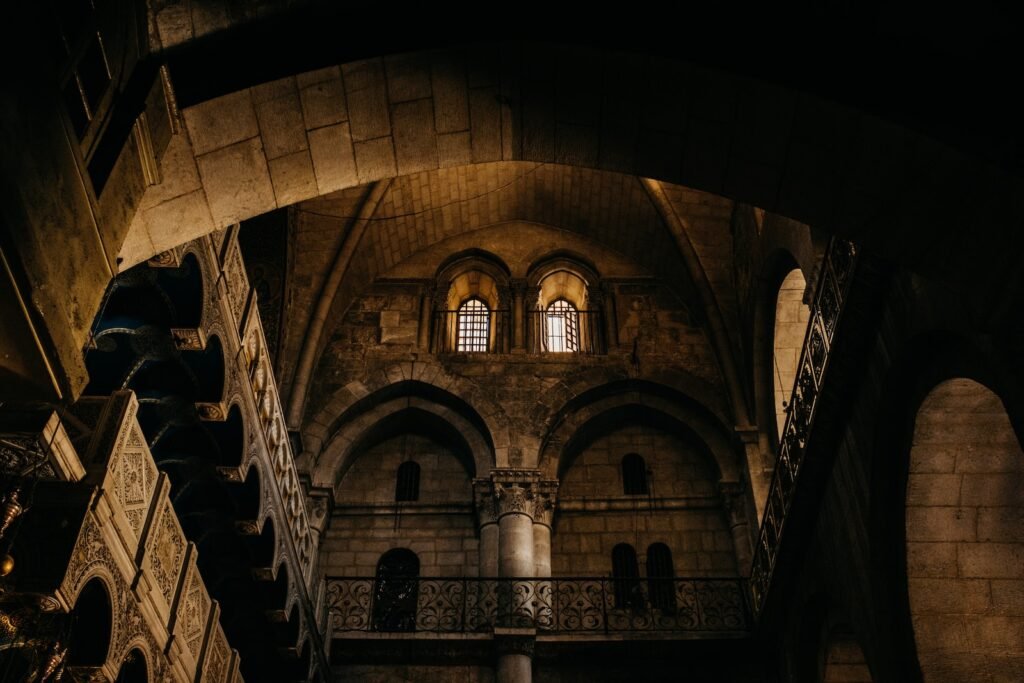By Sean Ra
The Holy Grail has fascinated people for centuries, captivating the imaginations of writers, scholars, and adventurers alike. Believed to be the cup used by Jesus Christ at the Last Supper, the quest for the Holy Grail has become a legendary pursuit. However, the existence of this mysterious artifact remains shrouded in myth and ambiguity. In this article, we will delve into the origins, historical accounts, symbolism, and popular culture references surrounding the Holy Grail. We will also examine the ongoing search for this elusive relic, as well as the enduring impact it has had on society.

The Holy Grail: A Legendary Quest
The Holy Grail is a legendary object that has become the focal point of countless quests and tales. It is often depicted as a sacred cup or dish, with supernatural powers and the ability to grant eternal life or infinite abundance. The allure of the Holy Grail lies in its connection to the life and teachings of Jesus Christ, making it a highly sought-after artifact.
Examining the Origins of the Holy Grail
The origins of the Holy Grail can be traced back to early Christian traditions and folklore. Some believe that it may have been the cup used by Jesus at the Last Supper, while others suggest it may have been used to collect his blood during the crucifixion. The idea of a sacred vessel associated with divine power has existed in various cultures long before the emergence of Christianity.
Historical Accounts of the Holy Grail
Despite the lack of concrete evidence, there are several historical accounts that mention the Holy Grail. One such account is found in the writings of Joseph of Arimathea, who was said to have collected Christ’s blood with a cup after his crucifixion. Other accounts include references in medieval chronicles and poems, where the Holy Grail is often portrayed as a mystical object with incredible abilities.
The Holy Grail in Medieval Literature
It was during the Middle Ages that the Holy Grail gained prominence in literature. The Arthurian legends, particularly the stories of King Arthur and the Knights of the Round Table, played a significant role in popularizing the quest for the Holy Grail. Poems like “Perceval, the Story of the Grail” by Chrétien de Troyes and “Le Morte d’Arthur” by Sir Thomas Malory further solidified the notion of the Holy Grail as a symbol of spiritual enlightenment.
Decoding the Symbolism behind the Holy Grail
The Holy Grail is often seen as a symbol of purity, spirituality, and divine revelation. It represents the eternal search for truth, knowledge, and enlightenment. The quest for the Holy Grail is not merely a physical journey, but also a metaphorical one, where the seeker embarks on a spiritual odyssey to attain wisdom and divine grace.
The Holy Grail in Popular Culture
The Holy Grail has achieved widespread recognition and has become deeply ingrained in popular culture. It has been featured in numerous books, movies, and television shows, further perpetuating its mystique. Notable examples include Dan Brown’s “The Da Vinci Code” and Monty Python’s comedic film “Monty Python and the Holy Grail,” which has become a cult classic.
The Search for the Holy Grail: Exploring the Legends
Throughout history, numerous adventurers and scholars have embarked on quests to find the Holy Grail. From the Knights Templar to the Crusaders, many believed in the existence of this sacred object and sought to claim its power. These quests often became epic journeys filled with challenges, tests of faith, and encounters with mystical beings.
Debunking the Myth: Scholars Weigh In
Despite the allure and widespread belief in the Holy Grail, many scholars argue that it is nothing more than a myth. They maintain that the Holy Grail is a symbolic construct, created to convey spiritual truths rather than representing a physical object. Some even suggest that the quest for the Holy Grail is an allegory for the pursuit of self-discovery and personal transformation.
Unveiling the Enigma: Does the Holy Grail Exist?
The question of whether the Holy Grail truly exists remains unanswered. While some continue to believe in its physical existence, others interpret it as a metaphorical concept. Despite countless expeditions and claims of discovery, no concrete evidence has been produced to confirm the existence of this elusive artifact.
The Quest Continues: Modern Expeditions for the Grail
Even in the modern era, the search for the Holy Grail persists. Various individuals and organizations still embark on expeditions, hoping to unravel the mystery and uncover the truth. These quests often merge history, archaeology, and spirituality in an attempt to separate fact from fiction and shed light on the Holy Grail’s enigmatic nature.
The Holy Grail’s Enduring Influence on Society
Regardless of its existence, the Holy Grail has left an indelible mark on society. It has sparked the imagination of countless individuals and inspired philosophical debates, artistic creations, and literary masterpieces. The concept of the Holy Grail continues to captivate people, offering a symbol of hope, spiritual fulfillment, and the eternal search for higher truths.
The Holy Grail: A Symbol of Spiritual Enlightenment
Above all, the Holy Grail is a powerful symbol of spiritual enlightenment. It represents the eternal quest for truth, wisdom, and divine grace. Whether the Holy Grail exists as a physical object or not, its enduring legacy lives on in the hearts and minds of those who seek to uncover the mysteries of the universe and find their own personal Holy Grail.
The Holy Grail remains an enigma, a symbol of the human desire for transcendence and the eternal pursuit of higher truths. Despite the debates and skepticism surrounding its existence, the allure of the Holy Grail continues to captivate and inspire. Whether it is a physical relic or a metaphorical concept, the Holy Grail represents the unending quest for spiritual enlightenment, reminding us that the true treasure lies not in the object itself, but in the transformative journey it represents.

